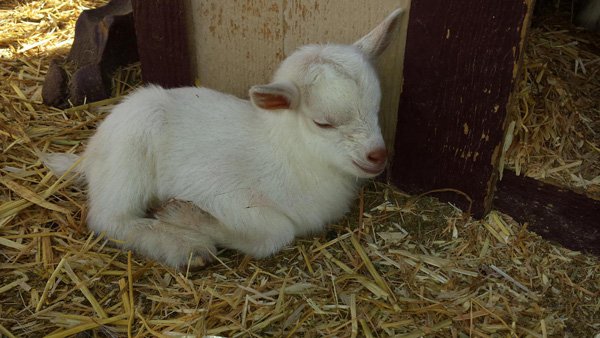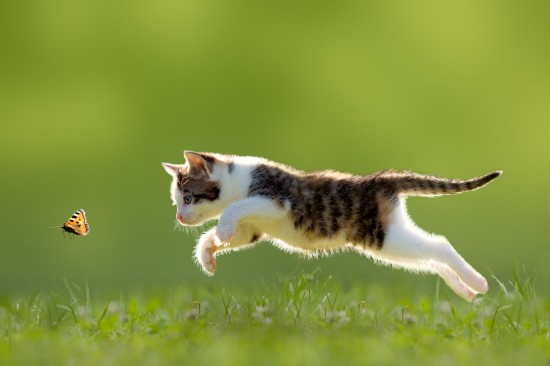
Many new cat owners really struggle with their cat house training. If they don't go about it in the right way from the beginning, this can be very frustrating. And this frustration can lead to them striking or shaking the offending cat.
For a start, any physical punishment is self-defeating - the cat will simply learn to fear you, and make any further training even more difficult. A very effective alternative to physical punishment is to keep a spray bottle of water handy - if she misbehaves, a little spray will let her know you are not pleased.
The surest key to success with your cat house training is to try to understand how your cat thinks, why she does the things she does, what motivates her. If you expect her to do something that goes against her nature, then you better be prepared to make it worth her while. If you want to make the most rapid progress, a modest investment in a decent cat manual or guide will be richly rewarded, and you will at a stroke begin to understand "cat think" and cat care in general, and also avoid the most common mistakes.
In practical terms, this most commonly means rewarding correct behavior either with a physical treat - a favorite food, biscuit, for example - or with words of praise and congratulation. She will quickly learn to associate particular actions with positive responses, and, conversely, if these rewards are withheld, she will know that she has transgressed in some way.
Cats are known for their short attention span, so your training sessions should be fairly brief, ideally around 10 minutes. And because their attention does tend to wander, make sure your sessions are held somewhere where there are as few distractions as possible. So make it indoors, with no view of the outdoor world, and no visitors, human or animal.
The essential training exercises that concern most new cat owners are to do with urination, scratching, jumping and biting.
Most cat owners face problems with their cat not using the litter box - obviously, a new kitten has to be taught toilet training cat style, but even mature well-behaved cats can suddenly "forget" to use the litter box, and, when this occurs, the wise owner will know to look for some change in the cat's environment that will have triggered this behavior.
The second biggest concern is with cat scratching, a behavior that is an essential part of the animal's nature. The provision of good scratching posts in strategic places will alleviate the problem, and spare your furniture and curtains. The surgical removal of the cat's claws was until recently seen as an easy and permanent solution to the problem, but in a more humane age this is seen as quite a barbaric act to perform on a Cat, and one that upsets the whole balance mechanism of the cat, and is really traumatic.
A cat will not expend unnecessary energy, so if she jumps there is a reason for it. Most often, she will jump onto the window sill to view the outside world - if you want her not to jump on a particular sill, block off the view for the first 15 inches, perhaps with a piece of fabric. If there is no view, she will soon go elsewhere. Jumping onto counters or worktops or tables in the kitchen should be completely discouraged from the beginning - it might simply signal that she wants feeding.
Biting is unfortunately often encouraged in a kitchen - children in particular enjoy being bitten by young kitten teeth, and will often playfully provoke it until it bites. But that "trains" the cat that biting is acceptable, so it should be avoided. If the behavior persists, you might discourage it with a spray from your water bottle.
Check out our cat house training book, where I share all the facts, tips and techniques on raising and caring for your cat. Quickly grow from a novice to a cat expert! Or download our free Cat Care reports - Perfect for all the family.
 Pick the Perfect Cheap Chicken Coops for Your Feathered Friends
Pick the Perfect Cheap Chicken Coops for Your Feathered Friends
 Japanese Chin Hereditary Health And Average Longevity
Japanese Chin Hereditary Health And Average Longevity
 Which Breeds Of Dog Have The Best Scenting Abilities?
Which Breeds Of Dog Have The Best Scenting Abilities?
 Beat The Bugs Out of Your Home With The Best Bed Bug Killer
Beat The Bugs Out of Your Home With The Best Bed Bug Killer
 Colors of Great Dane Available while Purchasing
Colors of Great Dane Available while Purchasing
 The 10 Most Important Puppy Commandments
The 10 Most Important Puppy Commandments
 The Differences Between Parvovirus And Canine Distemper
The Differences B
The Differences Between Parvovirus And Canine Distemper
The Differences B
 Dogs And Balconies - Staying Safe
Dogs And Balconie
Dogs And Balconies - Staying Safe
Dogs And Balconie
 Caring For An Emperor Scorpion
Caring For An Emp
Caring For An Emperor Scorpion
Caring For An Emp
 Five Of The Worst Reasons For Considering Getting A Dog
Five Of The Worst
Five Of The Worst Reasons For Considering Getting A Dog
Five Of The Worst
 5 Summer Safety Tips For Cat Owners
5 Summer Safety T
5 Summer Safety Tips For Cat Owners
5 Summer Safety T
Copyright © 2005-2016 Pet Information All Rights Reserved
Contact us: www162date@outlook.com